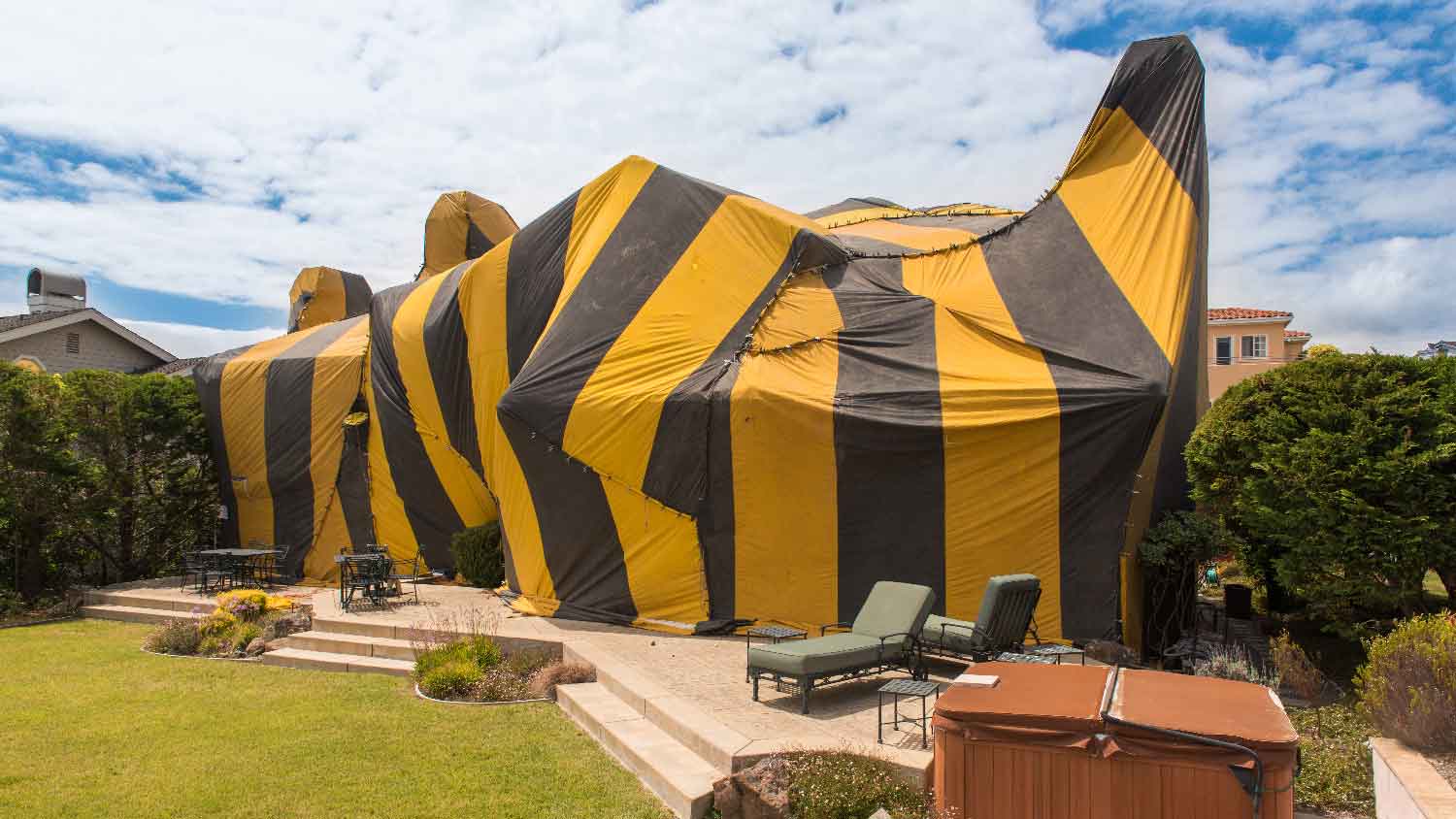
It’s important to know bed bug treatment costs if you have an infestation. Our guide covers different treatment methods and cost factors to eliminate these pests.
Controlling garden pests involves more than a one-and-done approach


Integrated Pest Management (IPM) is an environmentally-conscious pest control approach.
IPM emphasizes pest prevention over intervention.
Logging pest activity helps identify pest control approaches with the least impact.
IPM doesn’t shun pesticides, but encourages the sensible use of them.
Holes, gnaw marks, and other damages to your crops are enough to make you want to destroy all the pests that hurt them, posthaste. If only there were a quick and easy way to do it without side effects, but that’s rarely—if ever—the case.
Even the small-scale cultivation practices of a gardener have a role in the grander scheme of the environment. While they feed the slimy and creepy-crawly pests you don’t want, they also feed important garden pollinators, and what you use on your plants can affect environmental conditions long after your last tomato harvest.
Integrated Pest Management uses this principle as a blueprint for holistic pest control, with minimal impact on the environment. Here’s a breakdown of this practice and how to incorporate it into your garden.
Integrated Pest Management, or IPM, is an environmentally-conscious approach to pest control. Its premise is that there is no “quick-fix” solution for pest control, but rather a range of strategies that require a patient, consistent plan of action. Above all, it emphasizes preventative measures over reactive ones, and only using pesticides where absolutely necessary.
Techniques for IPM focus not only on the individual plant, but that plant’s place in the grander ecosystem. Using common-sense practices and observations, IPM aims to control pests with the least possible impact on humans and the environment.
According to the Environmental Protection Agency (EPA), an IPM program should feature a multi-tiered approach to pest control. Through regular tracking and considerate intervention, gardeners can keep pests under control with minimal impact on the natural ecosystem.
Before taking action, it’s important to know what you’re dealing with. Identifying and monitoring pests will help reduce the unnecessary use of pesticides and determine the best prevention methods. Targeting a pest at different stages of its life/development cycle can also be very important in achieving control.
To do this, keep a regular written log of these factors:
The number of pests
Areas that get hit the worst by pests
When and where the observations took place
Tracking this will help gauge which types of pests are causing the most damage, which areas are most vulnerable, and when to step in and intervene.
It’s tempting to kill every errant pest that munches on your cabbages, but nature has a level of resilience against these foes. This is why every IPM plan should feature a threshold to gauge when pests become a serious enough problem to intervene. Defining this threshold will help you tailor your pest control plan's size, scope, and concentration.
Part of controlling pests involves taking away the conditions that attract them. This includes:
Decluttering
Sealing points of entry
Getting rid of trash
Trimming overgrown vegetation
Maintaining clean areas for storage and dining
Installing natural barriers for pests
Eliminating standing water
IPM does not shun all forms of pesticides. Instead, it uses a tiered approach to focus on the lowest-risk pest management methods. These include:
Trapping pests
Use heat or cold treatments
Physical removal of pests
Application of natural pesticides

Integrated Pest Management applies to agricultural settings as well as smaller-scale settings in the home and garden. Plans feature a combination of habitat manipulation, cultivating resistant plant varieties, and monitoring the presence of pests. Use each of these tools as a guideline for your custom IPM approach.
Biological control involves introducing natural predators to help fight (or avoid) a pest problem. This means planting nectar-rich flowers and plants to invite beneficial insects to the garden. These helpful predators can gobble up the destructive insects that plague your crops.
Strategic plant selection is another important aspect of IPM. Plants that aren’t suited for a particular area will be under more stress and will be more susceptible to pest and disease issues. This concept can also apply to controlling mosquitoes and other pests that bother you while you’re trying to enjoy your outdoor space.
Some disease or pest issues may spread from one plant to another if they are nearby in the landscape. A common example is cedar-apple rust, which affects both cedar trees and apples and needs both nearby to develop.
Depending on the type of pest or disease requiring control, there may be several options for treatment. Not every issue requires the immediate application of chemicals. Physical removal of pests may be sufficient, as well as natural repellents or the introduction of natural predators.
IPM recognizes the harmful side effects of chemical pesticides and prioritizes solutions with a lesser impact on the environment. Rather than harming the environment with chemical and systemic pesticides, it emphasizes prevention and the use of organic pest control methods.
The goal of any program is generally not the full removal of the pest (there are exceptions to this for particularly damaging pests), but suppressing their numbers to a point where they are no longer causing damage. Plants live outdoors and cohabitate with insects, so you should expect pests. It’s a simple fact of gardening—and one we should work around with minimal interference.
From average costs to expert advice, get all the answers you need to get your job done.

It’s important to know bed bug treatment costs if you have an infestation. Our guide covers different treatment methods and cost factors to eliminate these pests.

How much does bee removal cost? Learn what you’ll pay based on factors like hive location, size of the infestation, extermination or removal, and more.

Tenting is a costly but effective way to exterminate termites. Learn the average termite tenting cost and everything that will factor into your budget.

Learn how to check for bed bugs in your home, what to do if you find them, and how to prevent them from returning in this handy DIY guide.

With a few supplies from home, you can make a DIY flea trap that’s safe and effective. Follow these steps to a successful flea trap.

Discover what attracts moles to your yard. Explore the factors that entice these subterranean creatures, from their favorite prey to soil conditions.